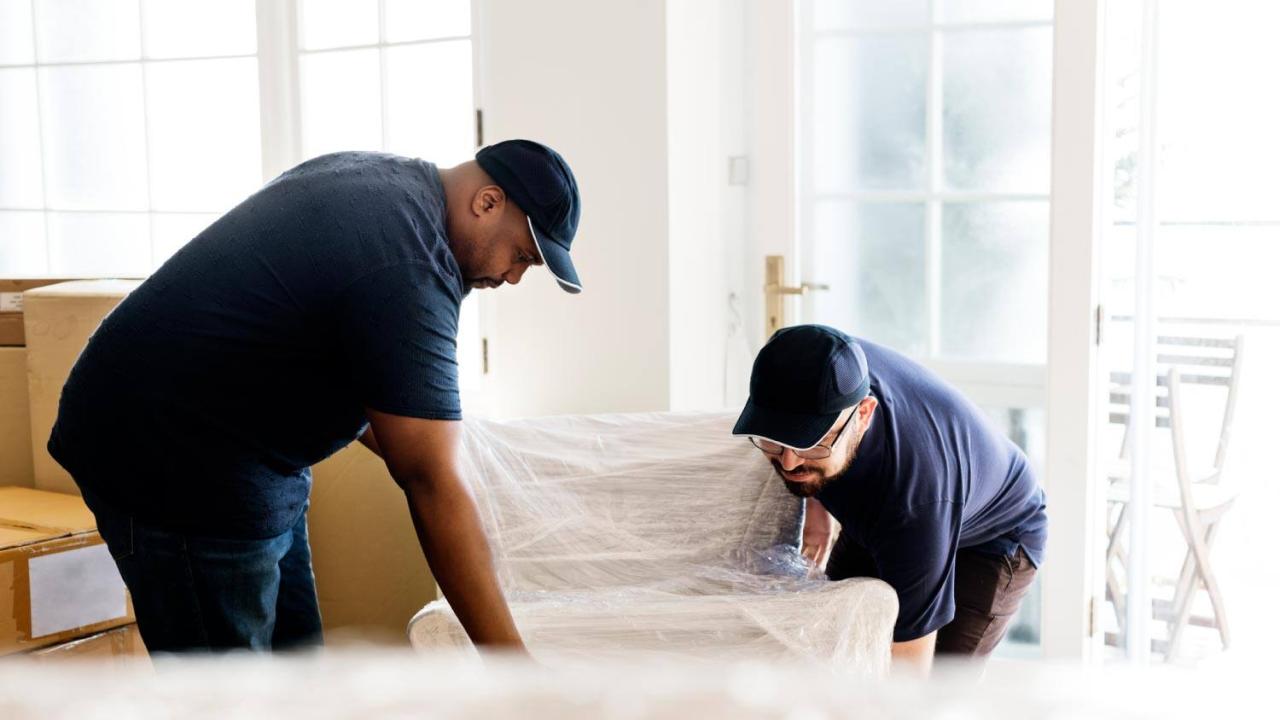Moving furniture in house – Moving furniture in-house can be a daunting task, but with proper planning and execution, it can be done efficiently and safely. This guide will provide you with all the essential steps and techniques you need to know, from planning and preparation to furniture protection and care.
Whether you’re moving into a new home or simply rearranging your current space, this guide will help you navigate the process with ease. So let’s get started and make your furniture move a success!
Moving Furniture In-House Preparation

Moving furniture in-house requires meticulous planning and preparation to ensure a smooth and efficient process. This involves creating a floor plan, measuring furniture and doorways, and decluttering and organizing belongings to minimize obstacles and maximize space utilization.
Creating a Floor Plan
A floor plan serves as a visual guide that helps you visualize the placement of furniture in each room. It allows you to experiment with different arrangements and identify potential space constraints or traffic flow issues before moving any furniture.
Moving furniture within a house can be a daunting task, especially if you need to navigate narrow hallways or stairs. In such cases, it’s worth considering the wayfair furniture return policy before purchasing bulky items. This policy provides peace of mind, allowing you to return furniture if it doesn’t fit or meet your expectations, ensuring a seamless and hassle-free moving experience.
- Measure the dimensions of each room, including windows, doors, and any architectural features.
- Draw a scale diagram of each room on graph paper or use a floor planning software.
- Cut out paper templates to represent the size and shape of your furniture and experiment with different layouts.
Measuring Furniture and Doorways
Accurately measuring furniture and doorways is crucial to avoid any surprises or difficulties during the move. This ensures that furniture can fit through doorways and be placed comfortably in designated areas.
- Measure the height, width, and depth of each piece of furniture.
- Measure the width and height of all doorways, including any thresholds or archways.
- If any furniture is particularly bulky or heavy, consider disassembling it for easier transport.
Decluttering and Organizing Belongings
Decluttering and organizing belongings before moving furniture in-house streamlines the process and reduces the amount of items that need to be moved. This helps create more space and makes it easier to maneuver furniture around.
- Sort through belongings and discard or donate anything that is no longer needed.
- Organize items into boxes or bins and label them clearly to facilitate unpacking.
- Pack away any fragile or valuable items separately and label them as “Handle with Care.”
Furniture Disassembly and Reassembly
Disassembling furniture prior to moving can significantly simplify the process and make it more efficient. It reduces the overall size and weight of items, enabling easier maneuvering through doorways, hallways, and staircases. Furthermore, disassembly helps protect furniture from damage during transport by minimizing the risk of collisions and scratches.
When disassembling furniture, it is essential to follow specific guidelines to ensure safety and prevent damage. For instance, always disconnect electrical cords and remove any glass or fragile components. Additionally, keep all hardware, such as screws, bolts, and nuts, organized and labeled for easy reassembly.
Common Furniture Types
The disassembly and reassembly processes vary depending on the type of furniture. Here are some common types and their respective guidelines:
- Tables:Remove the legs or base from the tabletop. Use a screwdriver or Allen wrench to loosen any bolts or screws. For tables with intricate designs, it may be necessary to consult the manufacturer’s instructions.
- Chairs:Detach the seat from the legs or base. Remove any cushions or upholstery. For chairs with adjustable heights, follow the manufacturer’s instructions for disassembly.
- Sofas and Armchairs:These typically require more disassembly. Remove cushions, pillows, and any loose covers. For sofas with reclining mechanisms, consult the manufacturer’s instructions for specific disassembly steps.
- Beds:Disassemble the headboard, footboard, and side rails. Remove the mattress and box spring. For beds with built-in storage, empty the drawers before disassembly.
- Bookcases and Cabinets:Remove shelves and drawers. For tall bookcases, it may be necessary to detach the top and bottom sections. Secure doors and drawers with tape to prevent them from opening during transport.
Furniture Lifting and Carrying Techniques
Moving furniture safely and efficiently requires proper lifting and carrying techniques. Understanding these techniques can prevent injuries and ensure the furniture remains intact during the move.
To begin, assess the weight and size of the furniture to determine the appropriate lifting method. Always lift with your legs, keeping your back straight and core engaged. Avoid bending over and lifting with your back, as this can strain your muscles and lead to injuries.
Moving furniture in house can be a tiring task, especially if you’re doing it alone. Fortunately, there are services available that can provide help with moving furniture . These services can take the hassle out of moving furniture, so you can focus on other things.
If you’re planning on moving furniture in house, be sure to consider using a service to help you with the heavy lifting.
Using Furniture Sliders
Furniture sliders are invaluable tools for moving heavy furniture across smooth surfaces. Place sliders beneath the legs or base of the furniture and gently push or pull to move it. Sliders reduce friction, making it easier to maneuver furniture without damaging floors or furniture.
Moving furniture within a house can be a challenging task. If you find yourself in need of assistance, consider reaching out to a professional moving service. These services can provide the necessary manpower and expertise to ensure your furniture is moved safely and efficiently.
For more information on professional moving services, visit help me move furniture . Once you have the necessary assistance, you can proceed with moving your furniture in-house with confidence.
Carrying Furniture Through Doorways and Hallways
When carrying furniture through narrow spaces, tilt it slightly on its side to fit through doorways and hallways. This technique helps prevent the furniture from getting stuck or damaging walls or furniture.
Furniture Placement and Arrangement

Furniture placement and arrangement play a crucial role in creating a functional and aesthetically pleasing living space. By carefully planning the layout, you can optimize space utilization, enhance traffic flow, and establish distinct areas for various activities.
Maximizing Space Utilization
- Consider the dimensions of your furniture and the available space in each room.
- Arrange furniture along walls or in corners to maximize floor space.
- Use vertical space by stacking shelves or hanging wall-mounted storage solutions.
Creating Functional Spaces
- Define specific areas for activities such as seating, dining, and entertainment.
- Place furniture in a way that facilitates easy movement and access to different parts of the room.
- Ensure there is ample space for walking and opening doors and drawers.
Establishing Focal Points
- Choose a focal point in each room, such as a fireplace, window, or artwork.
- Arrange furniture around the focal point to create a sense of balance and symmetry.
- Use furniture to draw attention to architectural features or other decorative elements.
Furniture Protection and Care: Moving Furniture In House

Protecting your furniture during a move is crucial to prevent damage and ensure its longevity. Employing furniture pads, blankets, and other materials can safeguard your belongings during transportation and handling.
After the move, proper cleaning and maintenance are essential to preserve your furniture’s condition. Regular care, such as dusting, vacuuming, and polishing, can extend its lifespan and maintain its aesthetic appeal.
Furniture Protection During Moving
- Furniture Pads:Wrap furniture legs, corners, and edges with furniture pads to prevent scratches and dents.
- Blankets:Cover furniture surfaces with thick blankets to protect them from dust, dirt, and potential impact.
- Plastic Wrap:Shield furniture from moisture and dirt by wrapping it in plastic wrap, especially for upholstered pieces.
Furniture Care After Moving, Moving furniture in house
- Cleaning:Remove dust, dirt, and debris from furniture surfaces using appropriate cleaning solutions and techniques.
- Maintenance:Regularly dust and vacuum upholstered furniture to prevent dirt accumulation and extend its lifespan.
- Polishing:Polish wooden furniture with appropriate products to enhance its shine and protect its finish.
Concluding Remarks
In conclusion, moving furniture in-house requires careful planning, proper techniques, and adequate protection for your belongings. By following the steps Artikeld in this guide, you can ensure a smooth and successful move that will leave your furniture looking its best in its new home.
FAQ Resource
How do I plan for moving furniture in-house?
Start by creating a floor plan and measuring your furniture and doorways. Declutter and organize your belongings to make the moving process easier.
What are some tips for disassembling and reassembling furniture?
Disassemble furniture for easier transport, and use tools and materials specifically designed for disassembly and reassembly.
How do I protect my furniture during a move?
Use furniture pads, blankets, and other materials to protect your furniture from scratches and damage. Clean and maintain your furniture after moving to keep it looking its best.